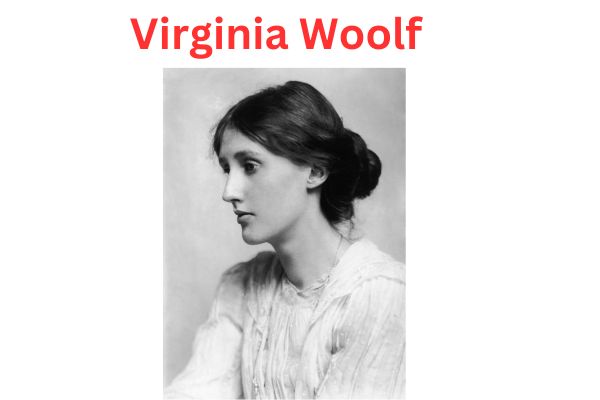In the vast landscape of English literature, there exists a figure whose words continue to resonate deeply with readers across generations. Her name is Virginia Woolf. In this blog, we embark on a journey through the life and important works of this extraordinary writer, exploring the essence of her artistry and the lasting impact she has left on the literary world.
Virginia Woolf : Life & Works
Virginia Woolf’s Early Life and Background
Virginia Woolf, born Adeline Virginia Stephen, came into the world on January 25, 1882, in London, England. She was raised in an intellectually stimulating environment, surrounded by the prominent literary and artistic figures of the Victorian era. Woolf’s upbringing was marked by tragedy, with the loss of her mother at the tender age of 13 and her half-sister Stella Duckworth just two years later.
Education and Literary Beginnings Of Virginia Woolf
Despite the challenges she faced, Woolf’s thirst for knowledge and passion for writing remained undimmed. She was largely self-educated, drawing inspiration from her father’s vast library and engaging in spirited discussions with her siblings. Woolf’s literary journey began with contributions to the family’s literary magazine, which provided a platform for her burgeoning talent.
Bloomsbury Group and Influences
In her early adulthood, Woolf became a central figure in the Bloomsbury Group, a collective of artists, writers, and intellectuals who challenged conventional ideas about art and society. Through her interactions with fellow Bloomsbury members such as E.M. Forster, Lytton Strachey, and her future husband Leonard Woolf, Virginia found both inspiration and a sense of belonging.
Exploration of Themes and Styles
Virginia Woolf’s writing is characterized by its innovative narrative techniques, stream-of-consciousness prose, and exploration of themes such as identity, gender, and the nature of reality. Her novels often delve into the inner lives of her characters, offering readers a profound insight into the human psyche.
Important Works: Exploring Virginia Woolf’s Literary Masterpieces
When we dive into the world of Virginia Woolf’s literature, we uncover a treasure trove of masterpieces that have left an indelible mark on the landscape of English literature. Each work is a journey into the depths of human experience, offering insights that resonate with readers long after the final page is turned.
“Mrs. Dalloway” (1925):
This seminal novel invites us into the bustling streets of post-World War I London, where we follow the protagonist, Clarissa Dalloway, through a single day as she prepares for a party. Through Woolf’s lyrical prose and intricate narrative structure, we are immersed in Clarissa’s world, navigating the complexities of memory, identity, and the passage of time.
“To the Lighthouse” (1927):
In this hauntingly beautiful novel, Woolf transports us to the windswept shores of the Isle of Skye, where the Ramsay family embarks on a holiday fraught with tensions and unspoken desires. Through Woolf’s evocative descriptions and keen observations, we witness the ebb and flow of human relationships, grappling with themes of love, loss, and the search for meaning in an ever-changing world.
“Orlando: A Biography” (1928):
A departure from Woolf’s traditional narrative style, “Orlando” is a whimsical romp through the centuries, following the titular character as they navigate the shifting sands of gender and identity. Through Orlando’s fantastical journey, Woolf explores themes of love, desire, and the fluidity of the self with her trademark wit and charm.
“A Room of One’s Own” (1929):
In this groundbreaking essay, Woolf offers a passionate defense of women’s rights and creative freedom. Drawing upon her own experiences as a woman writer, Woolf argues for the necessity of financial independence and personal space in order to pursue artistic endeavors. Through her vivid storytelling and incisive analysis, Woolf inspires readers to imagine a world where women’s voices are given the space and respect they deserve.
In each of these important works, Virginia Woolf invites us to embark on a journey of self-discovery and introspection. Through her innovative narrative techniques and profound insights, Woolf challenges us to question the boundaries of our own understanding and to embrace the complexities of the human condition. As we immerse ourselves in Woolf’s world, we are reminded of the transformative power of literature to illuminate the darkest corners of our souls and to forge connections that transcend time and space.
Personal Struggles and Legacy
Virginia Woolf struggled with mental illness her whole life, going through times of severe sadness and anxiety despite her literary achievement. At the age of 59, Woolf committed suicide on March 28, 1941.Her death was a devastating loss to the literary world, but her legacy endures through her groundbreaking writing and the lasting impact she has had on generations of readers and writers alike.
Conclusion
Virginia Woolf’s life and important works stand as a testament to the power of art to transcend the limitations of time and space. Through her innovative prose and keen insight into the human condition, Woolf invites readers to contemplate the complexities of existence and the beauty of the written word. As we reflect on her life and legacy, let us remember Virginia Woolf not only as a literary icon but also as a pioneer whose words continue to inspire and provoke thought in readers around the world.
Read Also : John Keats: A Poet’s Journey Through Love and Loss
